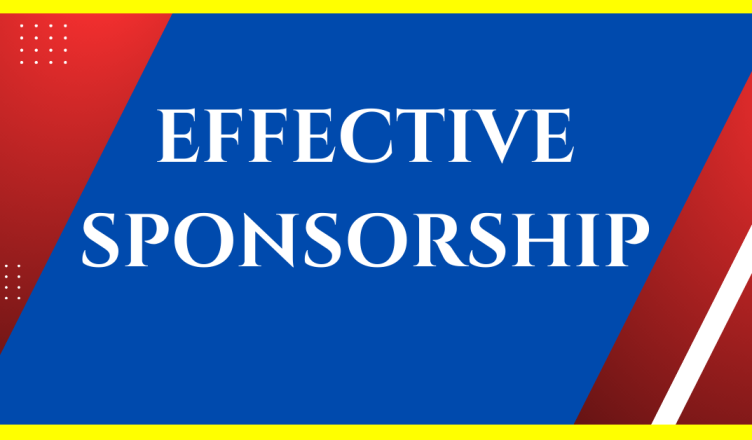Sponsorship is a powerful marketing tool that allows brands to connect with their target audiences in meaningful ways.
Whether it’s sponsoring a sports event, a music festival, or a charitable cause, the right sponsorship can generate brand awareness, enhance reputation, and drive consumer engagement.
However, to truly harness the potential of sponsorships, it is essential to measure their effectiveness.
In this guide, we will explore the key aspects of measuring sponsorship effectiveness and provide actionable insights to help you evaluate the impact of your sponsorship initiatives.
Setting Objectives and Identifying Key Performance Indicators (KPIs)
Before embarking on any sponsorship endeavor, it is crucial to define clear objectives.
Are you aiming to increase brand visibility, enhance brand perception, drive sales, or support a specific cause?
Once you have established your goals, identifying relevant Key Performance Indicators (KPIs) becomes essential.
For example, if your objective is to increase brand awareness, KPIs like reach, impressions, and social media mentions can provide valuable insights into your sponsorship’s impact.
Establishing a Baseline
To measure the effectiveness of your sponsorship, you need a benchmark for comparison.
Collect data on relevant metrics before initiating the sponsorship.
This data will serve as a baseline against which you can evaluate the impact of your sponsorship efforts.
By establishing a baseline, you can accurately determine the incremental value generated by your sponsorship and make informed decisions based on the results.
Tracking Brand Exposure and Reach
Brand exposure is a fundamental aspect of sponsorship effectiveness.
Monitoring and tracking the visibility of your brand throughout the sponsorship is crucial.
Utilize various methods such as tracking media coverage, impressions, and online mentions to gauge the extent of exposure your brand receives.
Additionally, leverage social media monitoring tools to measure your brand’s online exposure, as social media platforms play a significant role in shaping public opinion and engagement.
Assessing Audience Engagement
Engaging with the target audience is a primary objective of sponsorship.
To measure audience engagement, analyze their behavior and interaction during the sponsorship period.
Employ surveys, feedback forms, and focus groups to gather insights into their perceptions, attitudes, and experiences.
Furthermore, monitor social media engagement and conduct sentiment analysis to gauge the overall sentiment towards your brand during the sponsorship.
Evaluating Sponsorship ROI (Return on Investment)
One of the most critical aspects of measuring sponsorship effectiveness is evaluating its financial impact.
Calculate the Return on Investment (ROI) by comparing the costs incurred with the benefits generated.
Determine the cost per impression and the cost per engagement to understand the efficiency of your sponsorship initiatives.
By quantifying the financial value derived from the sponsorship, you can make data-driven decisions and allocate resources more effectively in future endeavors.
Measuring Sponsorship Impact on Brand Image
Sponsorships have the potential to shape brand perception and enhance brand image.
Conduct brand perception surveys before and after the sponsorship to assess changes in consumer attitudes and awareness.
Measure brand awareness levels, brand recall, and brand attributes to gauge the impact of the sponsorship on your brand image.
Additionally, track brand sentiment and reputation to ensure that the sponsorship aligns with your desired brand positioning.
Assessing Sponsorship Activation Effectiveness
Successful sponsorships often involve activation initiatives aimed at creating memorable experiences for the target audience.
To measure the effectiveness of these activations, evaluate their impact on consumer behavior and brand affinity.
Assess the level of audience participation, collect feedback on activation experiences, and analyze the resulting impact on brand loyalty and advocacy.
By measuring activation effectiveness, you can refine future sponsorship strategies to maximize engagement and impact.
Analyzing Sponsorship Alignment with Objectives
Once the sponsorship period concludes, it is crucial to assess the extent to which your sponsorship aligned with the initial objectives.
Compare the outcomes against your predefined goals and identify areas of alignment as well as areas that require improvement.
By conducting a thorough analysis, you can gain insights into the strengths and weaknesses of your sponsorship approach and make the necessary adjustments to optimize future sponsorships.
Conclusion
Measuring sponsorship effectiveness is essential for understanding the impact of your investment and making informed decisions for future sponsorships.
By setting clear objectives, tracking key metrics, assessing audience engagement, and analyzing the financial and brand impact, you can unlock valuable insights and refine your sponsorship strategies.
Remember, continuous evaluation and improvement are key to achieving long-term success in sponsorship endeavors.
In conclusion, effective measurement of sponsorship initiatives empowers you to optimize your investments, build stronger brand connections, and drive meaningful results.
By implementing the practices outlined in this guide, you will be equipped with the tools and knowledge to assess sponsorship effectiveness and unlock the full potential of your brand sponsorships.
